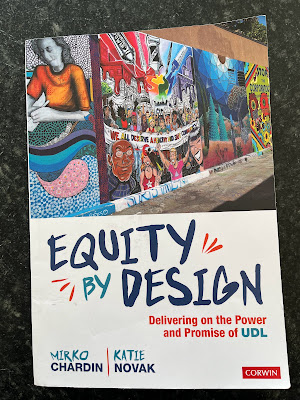Morphological Instruction for Older Students
"The primary function of English spelling is to represent meaning. The conventions by which English spelling represents meaning are so well-ordered and reliable that spelling can be investigated and understood through scientific inquiry" (Bowers, 2008).
"Generative instruction aims to make visible to students critical features and functions of words and connections among words. This knowledge is intended to support students in generating meanings of unknown words in texts" (Hiebert and Pearson, n.d.).
Since the 1955 publication of Why Johnny Can't Read, by Rudolf Flesch, researchers from various disciplines have engaged in a great deal of research on best practices related to reading instruction. In a foundational report, the National Reading Panel (2000) established the importance of explicit instruction in areas such as phonemic awareness, phonics, fluency, vocabulary, and comprehension strategies. There have been multiple Institute of Educational Sciences (IES) “Practice Guides” that report on more recent research and further inform evidence-based teaching practices. In addition to reports on early reading (including guides focusing on RTI, foundational skills, and comprehension), there have also been IES guides on best practices related to adolescent literacy and secondary reading intervention, English language learners, academic language for ELL students, and writing instruction for elementary and secondary students. These respected, rigorously researched publications are just a place to start; there is currently a massive amount of interest in literacy instruction best practices (often termed the science of reading).
Despite the vast amount of research and guidance already available, which persuasively sets out what we currently know about reading instruction, there are some burgeoning areas of interest. In particular, some scholars and teachers have created a community around a particular approach to building vocabulary and word knowledge. This community is called “Structured Word Inquiry” (or SWI for short). Literacy guru Tim Shanahan, who was a member of the National Reading Panel alphabetics subgroup and co-chair for the fluency subgroup, a literacy advisor to Presidents George W. Bush and Barack Obama, and a nationally recognized advocate for literacy over his career, publishes the popular blog Shanahan on Literacy, and he wrote an illuminating entry on morphology instruction. Drawing on the work of SWI mover-and-shaker Peter Bowers, Shanahan points to the use of word matrices, a key component of SWI, as a promising morphology instructional strategy teachers can use with students who have mastered basic decoding skills through explicit phonics instruction. It is clear that morphological awareness is crucial to reading success, but, to date there is insufficient research evidence to definitively determine best practices in morphology instruction. However, that does not mean we should ignore this crucial aspect of reading in instruction while we wait for the research to prescribe more precise practices.
SWI vocabulary instruction (although many SWI practitioners would favor the term “investigation” over instruction) centers upon four questions when considering a word:
What does the word mean?
How is the word constructed (e.g., what are the morphological units that compose the word)?
What are morphological and etymological relatives of the word?
What phonological and graphemic aspects of the word are noteworthy?
SWI is not the only approach to teaching vocabulary that centers morphology. Another approach is Elfrieda Hiebert’s “generative vocabulary instruction” approach described on Textproject, which has tons of great resources and free texts for instruction. Hiebert's approach might also be a tad more user-friendly than SWI to those totally new to the idea of using morphology and etymology in vocabulary instruction (because it does not rely on tools like word matrices). A vocabulary instruction routine is generative to the extent that it connects words based upon morphology (and etymology). For example, the word <morphology> would be connected with other words sharing the <morph> base: <morpheme>, <metamorphosis>, <anthropomorphism>, <amorphous>, and others. Connecting these words not only helps students learn the particular vocabulary term at a deeper level; connecting related words within vocabulary instruction is “generative” because it helps students tackle unknown words that share morphological units as students become more adept at noticing previously taught (or otherwise familiar) word parts.
Despite setting the stage for subsequent reading science approaches and research, the National Reading Panel has gotten its fair share of criticism over the years–often for what it didn't emphasize. For example, developmental spelling scholar Richard Gentry has bemoaned the fact that the NRP did not specify spelling as a sixth pillar of effective reading instruction. It is clear that explicit spelling instruction is important for student literacy development in both reading and writing, and new research and practices point to the possibility that vocabulary, spelling, and morphological instruction can be taught together in a coherent, explicit way (and perhaps even in a way that additionally involves student voice and curiosity as co-learners, which is one strength of the SWI approach). Finally, if morphological spelling and vocabulary instruction is undertaken explicitly, over time, and across content areas, students will have deeper and more generative entries for academic vocabulary words in their mental lexicon, and this will serve them for life.
Resources:
- Sample investigation of <differentiation> from Peter Bowers
- Etymonline
- Word Searcher
- Mini Matrix-Maker
- SWI in a Nutshell and Morphology Matrices (in progress)
References:
Bowers, P. (2008). Understanding SWI: “Structured word inquiry” or “scientific word
investigation." WordWorks Literacy Centre.
https://wordworkskingston.com/WordWorks/Structured_Word_Inquiry.html
Hiebert, E. H. & Pearson, P. D. (n.d.). Generative vocabulary instruction.
Textproject.org. https://textproject.org/wp-content/uploads/resources/Hiebert-Pearson-
Generative-vocabulary-instruction.pdf

Comments
Post a Comment